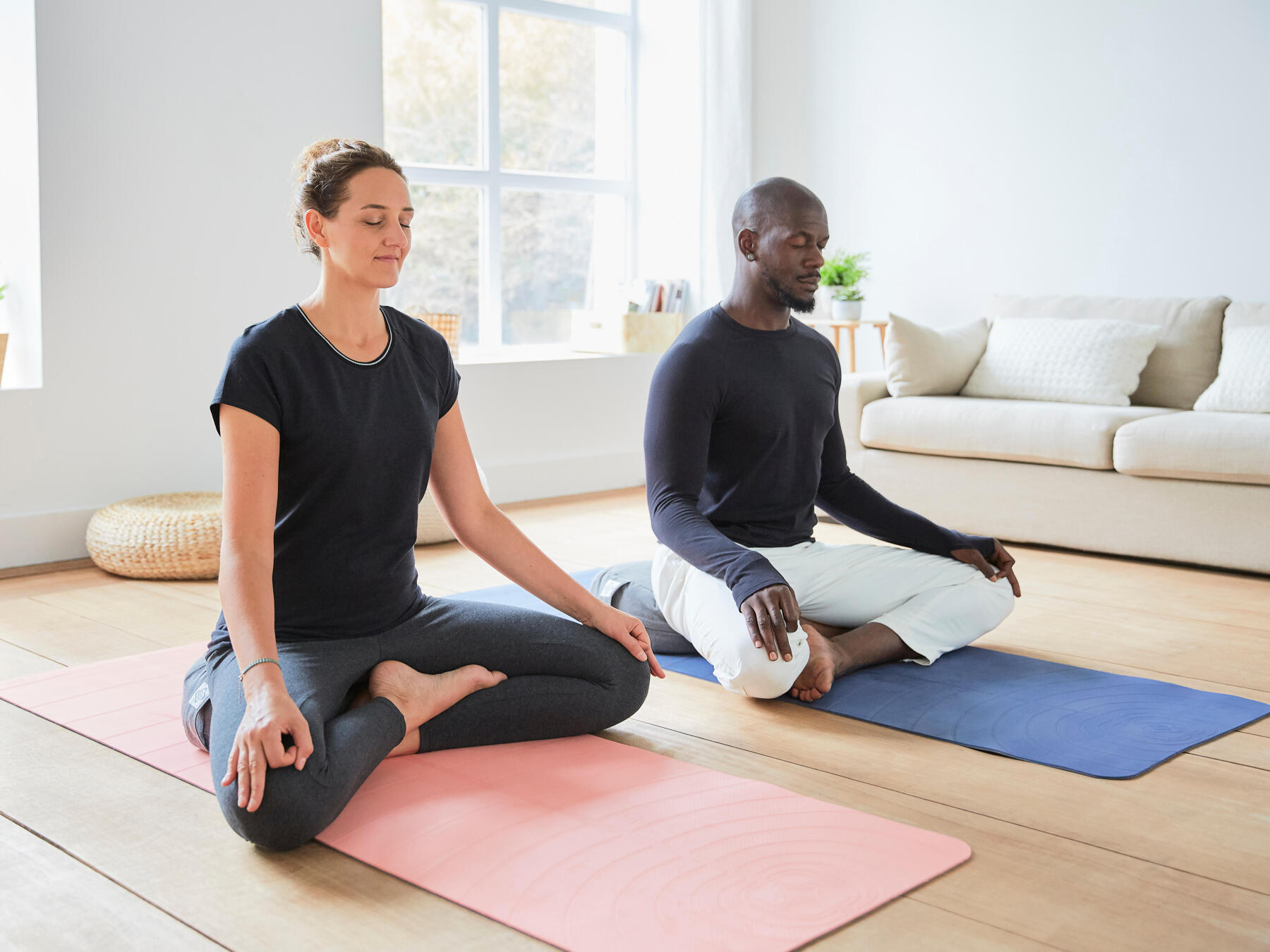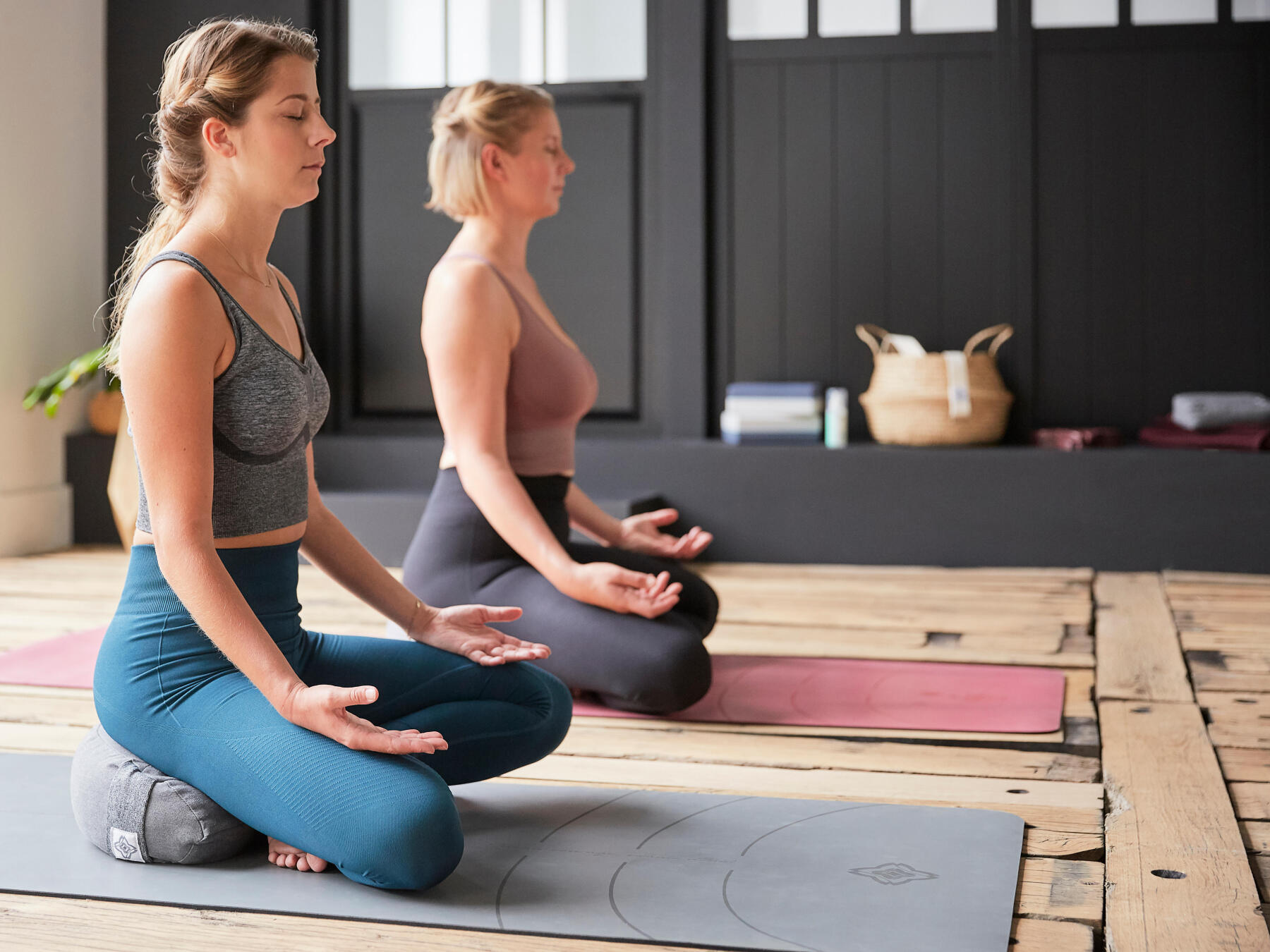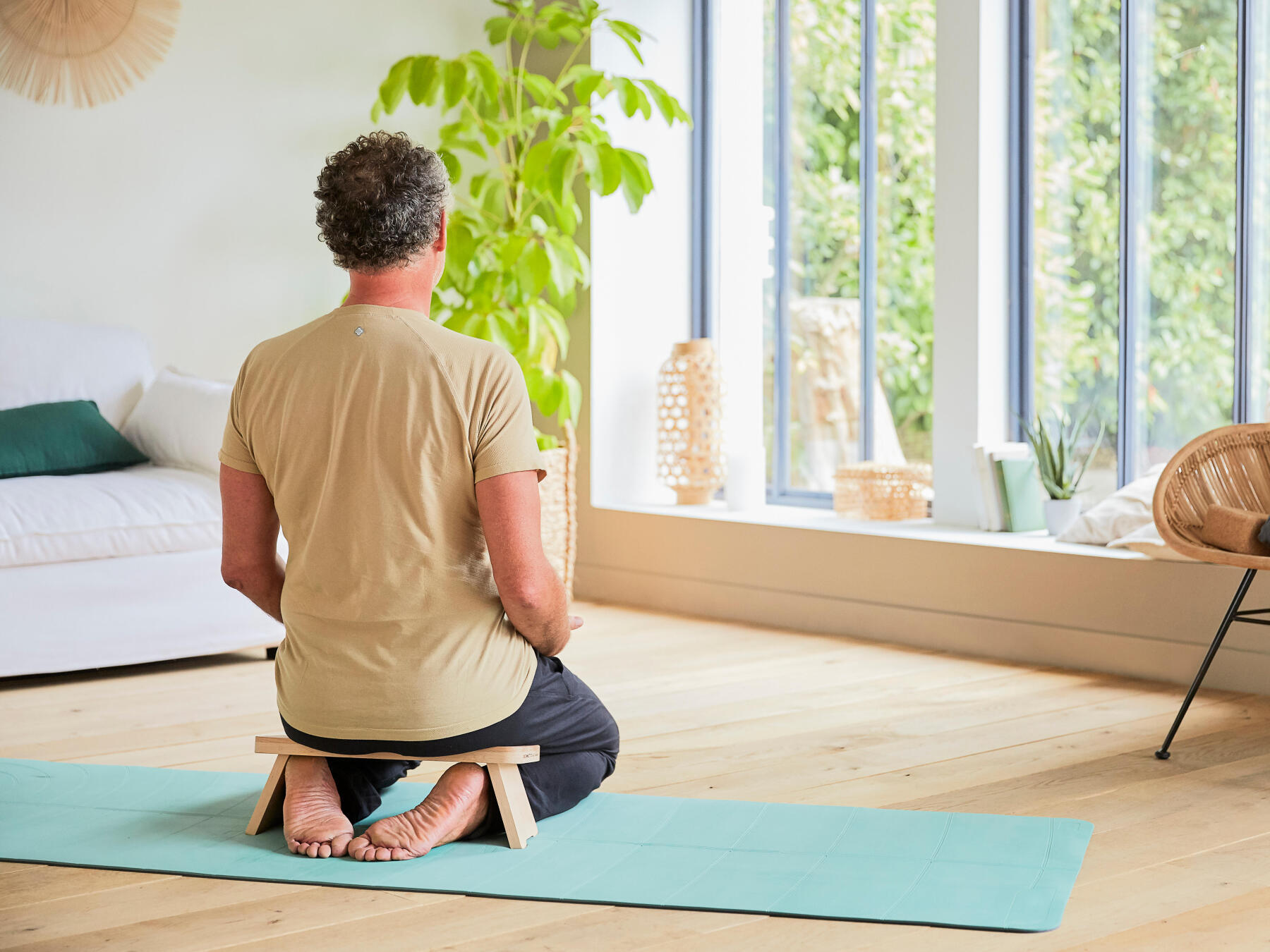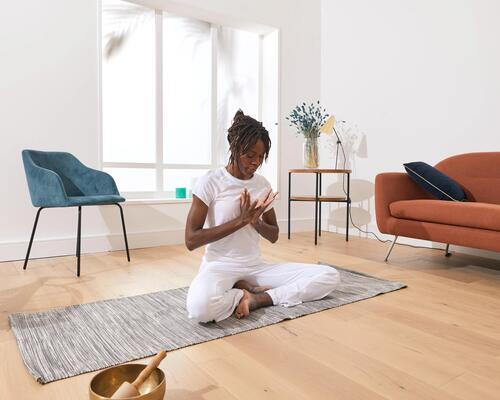Meditate… while brushing your teeth
A tip from Marine, one of our yoga product engineers: “You already dedicate a few minutes every morning and every night to brushing your teeth. Why not use this time for a mindfulness exercise as well? Start by setting an intention for your meditation, and try not to let your mind wander. That’s what meditation is really about. It’s entirely possible to reach a calm, peaceful state with a toothbrush in your mouth.” Ideally, you should set a specific time, or choose a specific task for your meditation practice.





